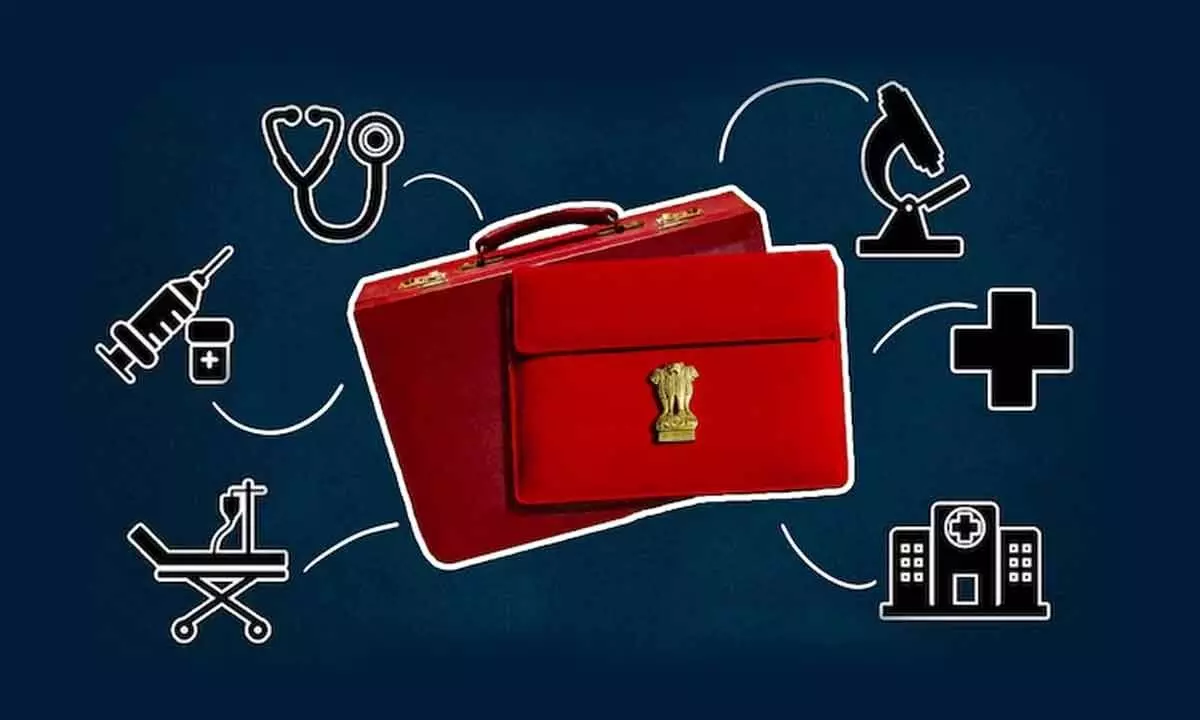High debt load limits govt spend on welfare
There’s limited fiscal space to stimulate the economy given high public debt, but infrastructure upgrades have created long-term positive growth spillovers: Goldman Sachs
image for illustrative purpose

The upcoming budget may go beyond just fiscal numbers, and lay emphasis on job creation. For this it may focus on labour-intensive manufacturing, credit for small businesses, continued focus on services exports
Prudent Measures
- Govt may reduce fiscal deficit target to 4.5% in FY26
- Current fiscal deficit is 5.1%
- Rs2.1 lakh-cr dividend transfer from RBI a major support to govt
Mumbai: India’s high public debt offers limited fiscal space to undertake welfare measures, which can help stimulate the economy, a foreign brokerage said on Monday. In a report that comes weeks ahead of the presentation of the budget, Goldman Sachs said Finance Minister Nirmala Sitharaman may continue on the fiscal consolidation roadmap, sticking to the 5.1 per cent fiscal deficit target announced in the interim budget. It said investors are expecting from the budget some relaxation in fiscal consolidation path and a shift in focus to welfare spending from capital expenditure.
However, the same is not plausible, the brokerage hinted. “There is limited fiscal space in our view to stimulate the economy given high public debt, (and) India’s infrastructure upgrades have created long-term positive growth spillovers which policymakers may not be willing to give up,” it reasoned. It said that the final fiscal deficit target may also be lowered from the present 5.1 per cent, and Sitharaman may further reduce the number to 4.5 per cent in FY26. Even if there is ‘some expenditure allocation’ towards welfare spending, it may not require a reduction in capex given the Rs2.1 lakh crore dividend transfer from the Reserve Bank, it said.
There is a limited fiscal space for stimulus in FY25, it said, pointing out that interest expense constitutes a large share at 5.4 per cent of GDP in the general government’s budget. “Our fiscal impulse calculations also show that general government fiscal policy has been a drag on growth since FY22 and will remain so in FY25 and FY26 given the fiscal consolidation target of the central government,” it said. Capex grew at a healthy 31 per cent between FY21-24, giving a boost to growth, it said.
The brokerage said the upcoming budget may go beyond just fiscal numbers, and lay emphasis on job creation. For this it may focus on labour-intensive manufacturing, credit for small businesses, continued focus on services exports by expanding global capability centres. It may also have a thrust on domestic food supply chain and inventory management to control price volatility, the report said. It may also lay out a path for the future of public finance in India, which will entail a roadmap for public debt sustainability, and green finance.

